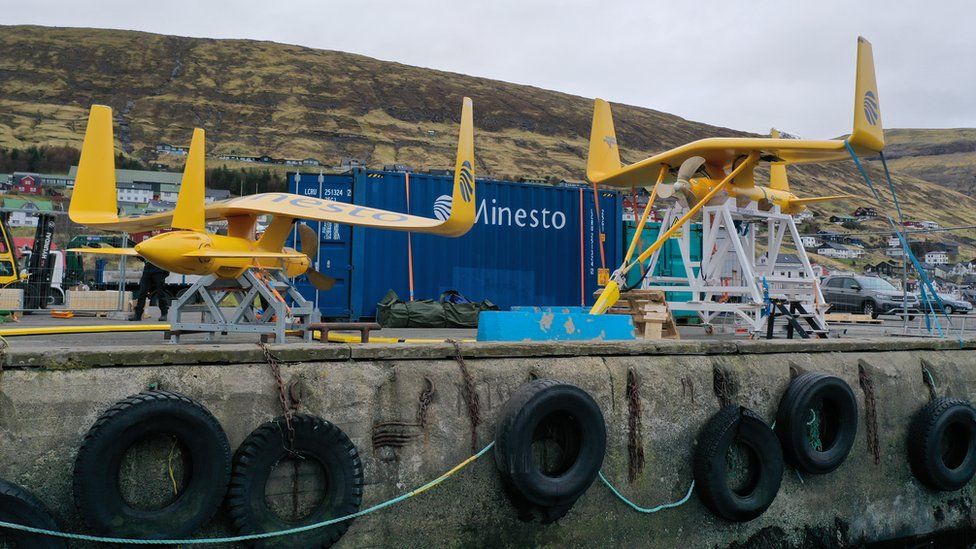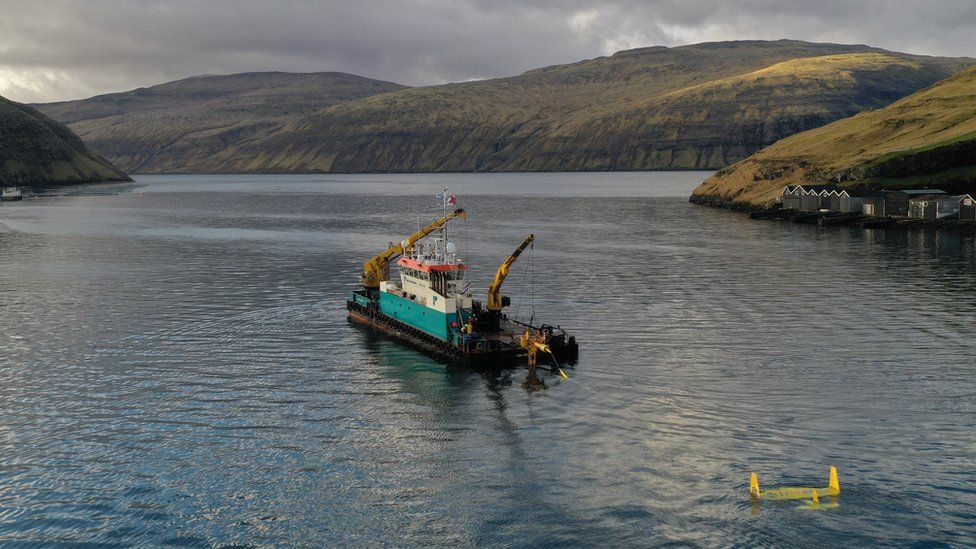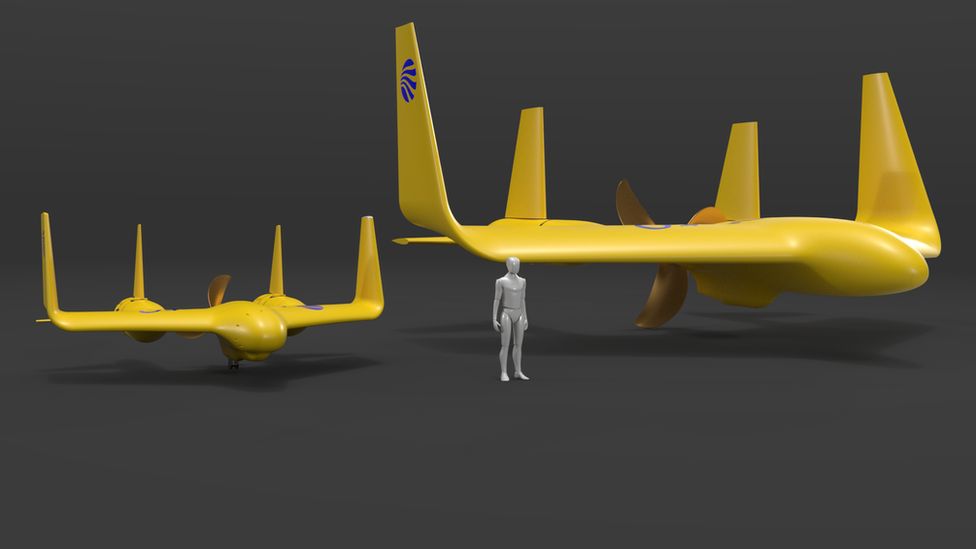
If there’s plenty of sky, but little sun; plenty of wind, but little land, where can the Faroe Islands look for renewable energy?
The answer is obvious, owing to their Viking origins: Sea Dragons.
The Sea Dragon is a unique form of kinetic energy generated by the movement of the tides. 40 meters below the surface, they are underwater kites or gliders that have a 16-foot wingspan and swim in a figure of eight position along with the tide, generating enough energy to power 50-70 homes.
Home to just 50,000 people, the Faroe Islands is a self-governing Danish archipelago that lies between Iceland and Shetland—and one would think it would be an easy enough place to reach a zero-emissions target.
But with North Atlantic weather and not much land to build wind turbines, hydro-electric power gives over 40% of the island’s energy supplies.

Built by Minesto, a spin off from the parent company of airplane and (former) car manufacturer Saab, the “tidal kites,” as they’re called, operate by using the lift force of the tide rather like an airplane uses the force of air passing over its wings to fly.
With an onboard control system and rudders, the kite is autonomously steered in a pre-determined pattern that pushes it through the sea while anchored to the seafloor by a tether. By doing so, the turbine experiences a water flow several times higher than the actual stream speed.

The turbine diffuses power to the generator which sends electricity via power cable in the tether up to a station on land.
Operating in unison with the marine environment in totally predictable ways, the tidal kites are extremely low in environmental impact, and most importantly for the tiny island chain, use up no land other than for the receiving power station.
“The new kites will have a 12-metre wingspan, and can each generate 1.2 megawatts of power [a megawatt is 1,000 kilowatts],” Martin Edlund, CEO of Minesto, told the BBC. “We believe an array of these Dragon-class kites will produce enough electricity to power half of the households in the Faroes.”
Returning to winter from an unusually windless summer in which the Faroes had to import much more diesel than their installation of wind turbines would have made them expect, the tide’s regularity is literally the stuff of legend; so much so that Minesto believe their dragons could provide 600 gigawatts low-impact, low-cost, renewable energy around the world if scaled up.
(WATCH the video for this story below.)
ENERGIZE Those Feeds With This Good Green News…



















